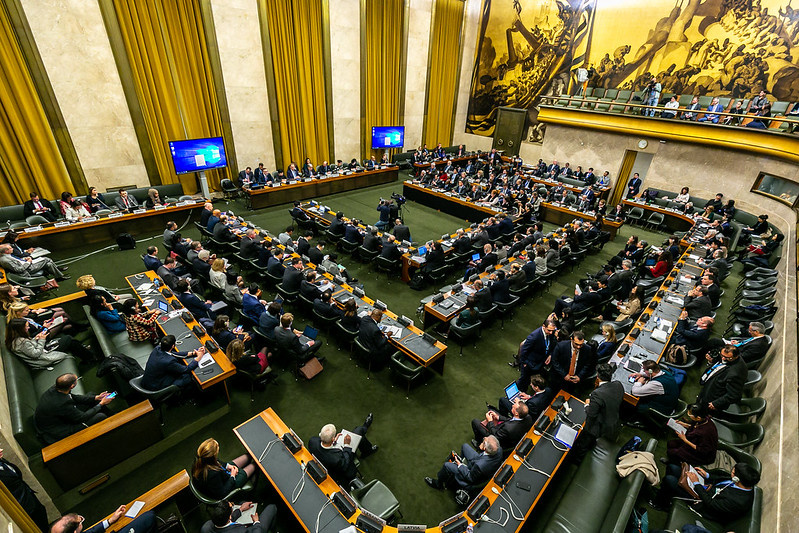Breadcrumb

INTERNATIONAL COMMUNITY TO MEET TO ASSESS PROGRESS IN THE FIGHT TO ELIMINATE ANTI-PERSONNEL MINES

Representatives of 162 States parties and dozens of international and civil society organizations will gather in Geneva from 30 November to 4 December 2015 for the Fourteenth Meeting of the States Parties to the Convention on the Prohibition of the Use, Stockpiling, Production and Transfer of Anti-Personnel Mines and on Their Destruction (“Ottawa Convention” or Anti-Personnel Mine Ban Convention).
The meeting will see States addressing challenges faced in implementing the Convention and the Maputo Action Plan - a five-year road-map to implement the Convention - adopted at the 2014 Maputo Third Review Conference, as well as assessing the operation of the Convention and the functioning of its implementation machinery. In addition, the meeting will feature debates on requests for extensions on the Convention’s obligation to clear mined areas in a 10 year period.
The meeting will be presided over by Ambassador Bertrand de Crombrugghe of Belgium. A high level opening ceremony at 11 a.m. on 30 November 2015 will feature addresses by H.R.H. Princess Astrid of Belgium; Didier Reynders, Vice Prime Minister and Minister of Foreign and European Affairs of Belgium; the Secretary-General of the United Nations, delivered by Michael Møller, Director-General of UNOG and Secretary-General of the Conference on Disarmament; Georges Martin, Deputy State Secretary of Switzerland; Christine Beerli, Vice-President of ICRC and others.
In addition, at 3 p.m., a round table with the participation of H.R.H. Princess Astrid; Catalina Devandas Aguilar, UN Special Rapporteur on the Rights of Persons with Disabilities; and mine survivors from around the world will focus on victim assistance under the Ottawa Convention.
The meeting will conclude its work on Friday, 4 December, with the adoption of a final report.
About the Ottawa Convention:
The Convention was adopted in Oslo on 18 September 1997 and opened for signature in Ottawa 3-4 December 1997 at a ceremony that featured the participation of UN Secretary-General Kofi Annan. For their determination in calling for the Convention, the International Campaign to Ban Landmines was awarded the 1997 Nobel Peace Prize.
The purpose of the Convention is “to put an end to the suffering and casualties caused by anti-personnel mines.” It seeks to fulfill this purpose through the pursuit of four core aims:
§ Universal acceptance of a ban on AP mines.
§ The destruction of stockpiled AP mines.
§ The clearance of mined areas.
§ Providing assistance to mine victims.
The Convention entered into force on 1 March 1999. A total of 162 States have ratified or acceded to the Convention so far.
For use of the information media; not an official record
DC15/050E
